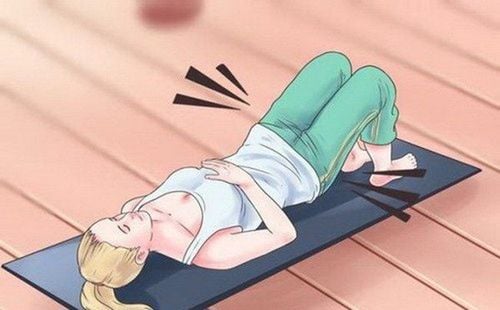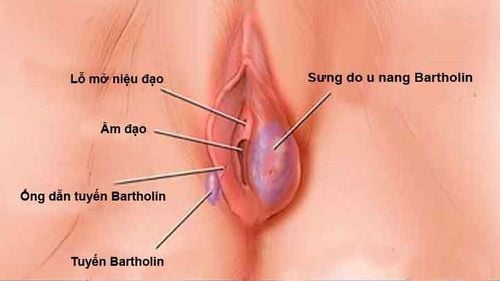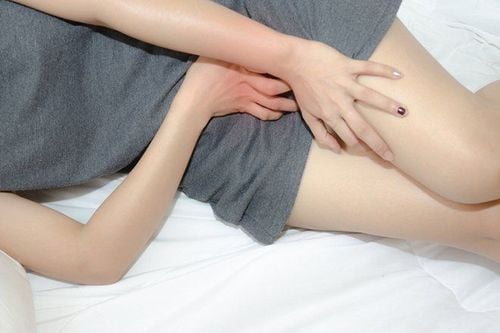This is an automatically translated article.
The article was professionally consulted with Specialist Doctor I Truong Nghia Binh - Specialist in Obstetrics - Obstetrics and Gynecology - Vinmec Da Nang International General Hospital.1. What is vaginal spasm?
Vaginal spasm is a syndrome that occurs when the muscles in the vagina do not contract or continuously contract when an object tries to penetrate the vagina. As a result, contractions can prevent sex or cause pain.This can happen when a sexual partner tries to penetrate or when a woman inserts a tampon or even when a woman touches near their vaginal area.
Vaginal spasm does not interfere with sexual arousal but it can prevent penetration. A mild pelvic exam usually doesn't cause contractions. There are no physical abnormalities contributing to the condition.
Experts don't know exactly how many women experience vaginismus, but the condition is considered uncommon.
2. Causes of disease
In fact, doctors still don't know what causes vaginal spasms. The condition is linked to past sexual abuse or trauma, through painful intercourse, and emotional factors. In some cases, a direct cause cannot be found.
Several factors contribute to primary vaginitis: vestibular vulvovaginitis syndrome, urinary tract infections, fungal vaginitis, past sexual abuse, rape or sexual assault sexual abuse, witnessing physical or sexual abuse of others, witnessing domestic violence or childhood conflict, fear of being inserted into the vagina due to obsession with rumors of pain from hymen tearing or sexual intercourse sex for the first time...
2.2. Psychoanalytic Interpretation Classical psychoanalysis holds that vaginal spasms are caused by unresolved psycho-sexual conflicts from childhood. Women with this disorder are those who have been locked in or regressed at (or before) Oedipe. According to Abraham (1956), in some severe cases, a woman is unable to transfer libido energy from her father to her husband or partner. In many other cases, women remain locked in their mothers. Such cases have a poor prognosis.
2.3. Interpretation from a Behavioral Perspective According to behavioral theory, vaginal spasms are an obsessive response to actual or imagined negative experiences related to intercourse. High levels of fear or anxiety cause sympathetic nervous system activation and one of its consequences is involuntary contraction of the vaginal muscles. Fear, on the other hand, can also stem from a lack of understanding of sexual matters.

3. Risk factors for disease
This syndrome is not as common as other sexually transmitted diseases. Sexual dysfunction can occur in both men and women and can often be treated. It's not your fault and you have nothing to be ashamed of about the situation. However, these disorders can interfere with relationships and quality of life.Risk factors for disease such as:
Multiple sexual abuse; Injury; Have a painful history of having sex; Emotional factors.

4. Common disease-causing symptoms
Chronic pain is often a woman's first sign of vaginal spasms. The pain occurs only with penetration and usually goes away after no penetration but not always.Women have described the pain as a burning sensation or a feeling of being hit or pushed against a wall.
Many women with vaginismus also feel uncomfortable when inserting a tampon or while the doctor examines the pelvis.
5. Treatment
Doctors will make a diagnosis using information gathered from a physical exam to determine this condition.Your doctor may need to ask you some personal questions to learn more about your condition. In some cases, you may need to have your vagina examined to rule out a physical cause of your vaginal spasms, such as an injury, infection, or an excessively dilated nerve during vaginal opening.
After your doctor diagnoses vaginismus, he or she may recommend the following treatment options:
Kegel exercises
You perform by squeezing the muscles used to stop the flow of urine while urinating. . To perform Kegel exercises, repeatedly tighten and relax the pelvic floor muscles, which control the vagina, rectum, and bladder.

After a few days, you insert a finger, up to the first joint, inside the vagina during exercise. You need to trim your nails and use a lubricant. You should practice in the bath, where water is a natural lubricant. Start with one finger and work your way up to three fingers. You should feel the vaginal muscles contracting around your finger and you can pull your finger out if you don't feel comfortable.
For women with vaginismus associated with fear or anxiety, this therapy will help.
International General Hospital now has a package of examination and counseling on sexual dysfunction in women, for female customers between the ages of 18 and 65 years old or older who need examination and advice. counseling, and treatment of sexual dysfunction.
When registering for the package of examination and counseling for female sexual dysfunction, customers will receive:
Gynecological examination Gynecological examination, breast examination Transabdominal ultrasound of the uterus and ovaries Perform tests other....
Please dial HOTLINE for more information or register for an appointment HERE. Download MyVinmec app to make appointments faster and to manage your bookings easily.














